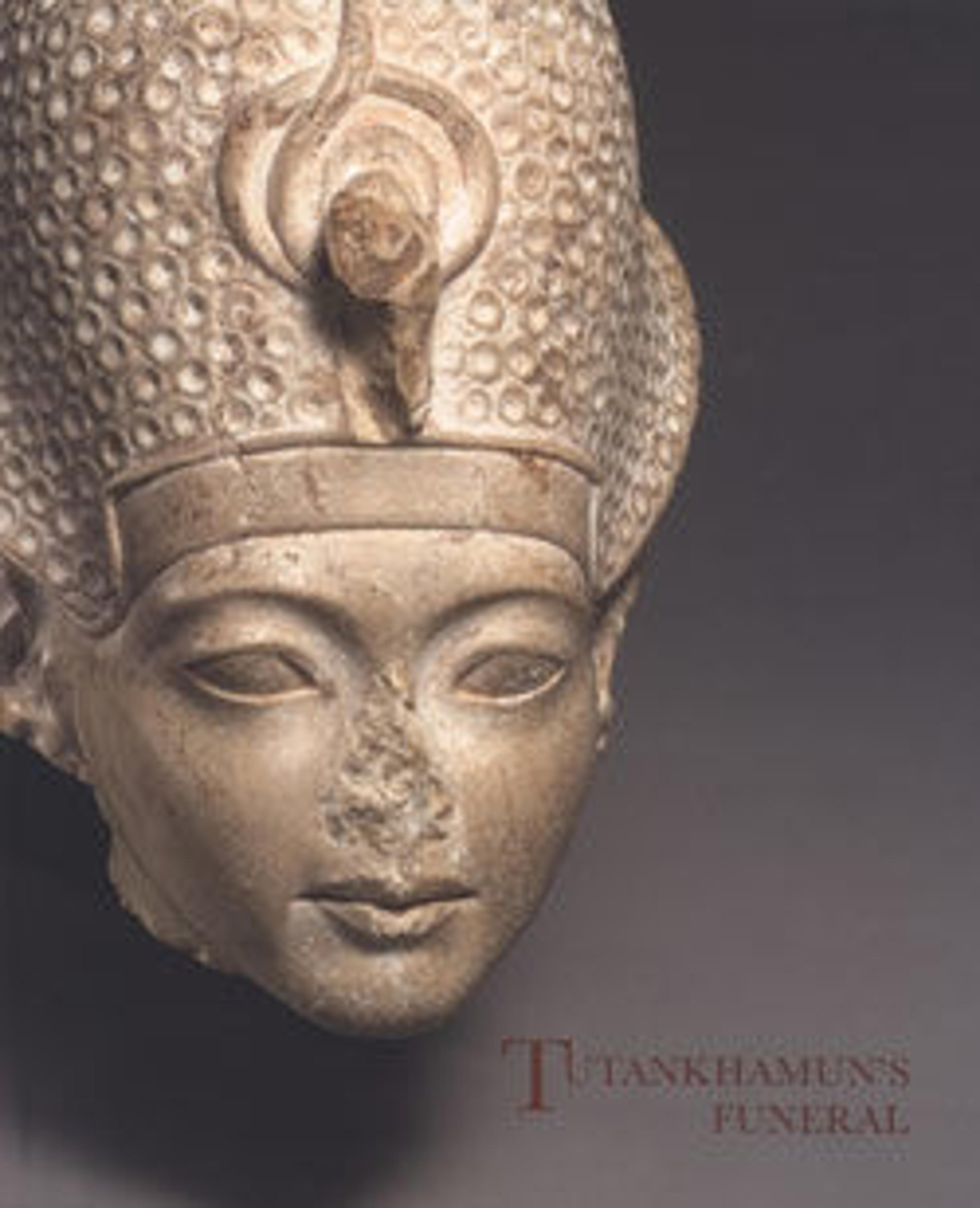Linen from Tutankhamun's Embalming Cache
In December 1907 Theodore M. Davis, a wealthy American who was funding excavations in the Valley of the Kings, discovered a small pit near the tomb of Seti I. Inside the pit were approximately a dozen large sealed whitewashed storage jars (09.184.1). Among other things, the jars contained bags of natron (a kind of salt), pieces of linen with hieratic inscriptions dated to Years 6 and 8 of a king named Tutankhamun (throne name Nebkheperure). At the time, almost nothing was know about Tutankhamun, and Davis declared that he had discovered the king's tomb.
Davis received a number of the jars and their contents in the division of finds and, in 1909, he gave most of his share to the Metropolitan Museum. It was only later that Herbert Winlock, the field director of the Museum's excavations at Thebes, realized that the natron and linen were embalming refuse from the mummification of Tutankhamun.
This piece of linen cloth is inscribed in two places. In the upper right corner, the inscription reads: The Good God, Lord of the Two Lands, Nebkheperure, Beloved of Min, linen of year 6. The second inscription, at the center bottom of the sheet, is two lines of hieratic (a cursive form of Egyptian writing) and has, thus far, proven illegible.
Davis received a number of the jars and their contents in the division of finds and, in 1909, he gave most of his share to the Metropolitan Museum. It was only later that Herbert Winlock, the field director of the Museum's excavations at Thebes, realized that the natron and linen were embalming refuse from the mummification of Tutankhamun.
This piece of linen cloth is inscribed in two places. In the upper right corner, the inscription reads: The Good God, Lord of the Two Lands, Nebkheperure, Beloved of Min, linen of year 6. The second inscription, at the center bottom of the sheet, is two lines of hieratic (a cursive form of Egyptian writing) and has, thus far, proven illegible.
Artwork Details
- Title: Linen from Tutankhamun's Embalming Cache
- Period: New Kingdom
- Dynasty: Dynasty 18
- Reign: reign of Tutankhamun
- Date: ca. 1336–1327 B.C.
- Geography: From Egypt, Upper Egypt, Thebes, Valley of the Kings, Embalming Cache of Tutankhamun (KV 54), Davis/Ayrton excavations, 1907–08
- Medium: Linen, ink
- Dimensions: L. 96.5 cm (38 in); W. 32 cm (12 5/8 in)
- Credit Line: Gift of Theodore M. Davis, 1909
- Object Number: 09.184.220
- Curatorial Department: Egyptian Art
More Artwork
Research Resources
The Met provides unparalleled resources for research and welcomes an international community of students and scholars. The Met's Open Access API is where creators and researchers can connect to the The Met collection. Open Access data and public domain images are available for unrestricted commercial and noncommercial use without permission or fee.
To request images under copyright and other restrictions, please use this Image Request form.
Feedback
We continue to research and examine historical and cultural context for objects in The Met collection. If you have comments or questions about this object record, please complete and submit this form. The Museum looks forward to receiving your comments.
